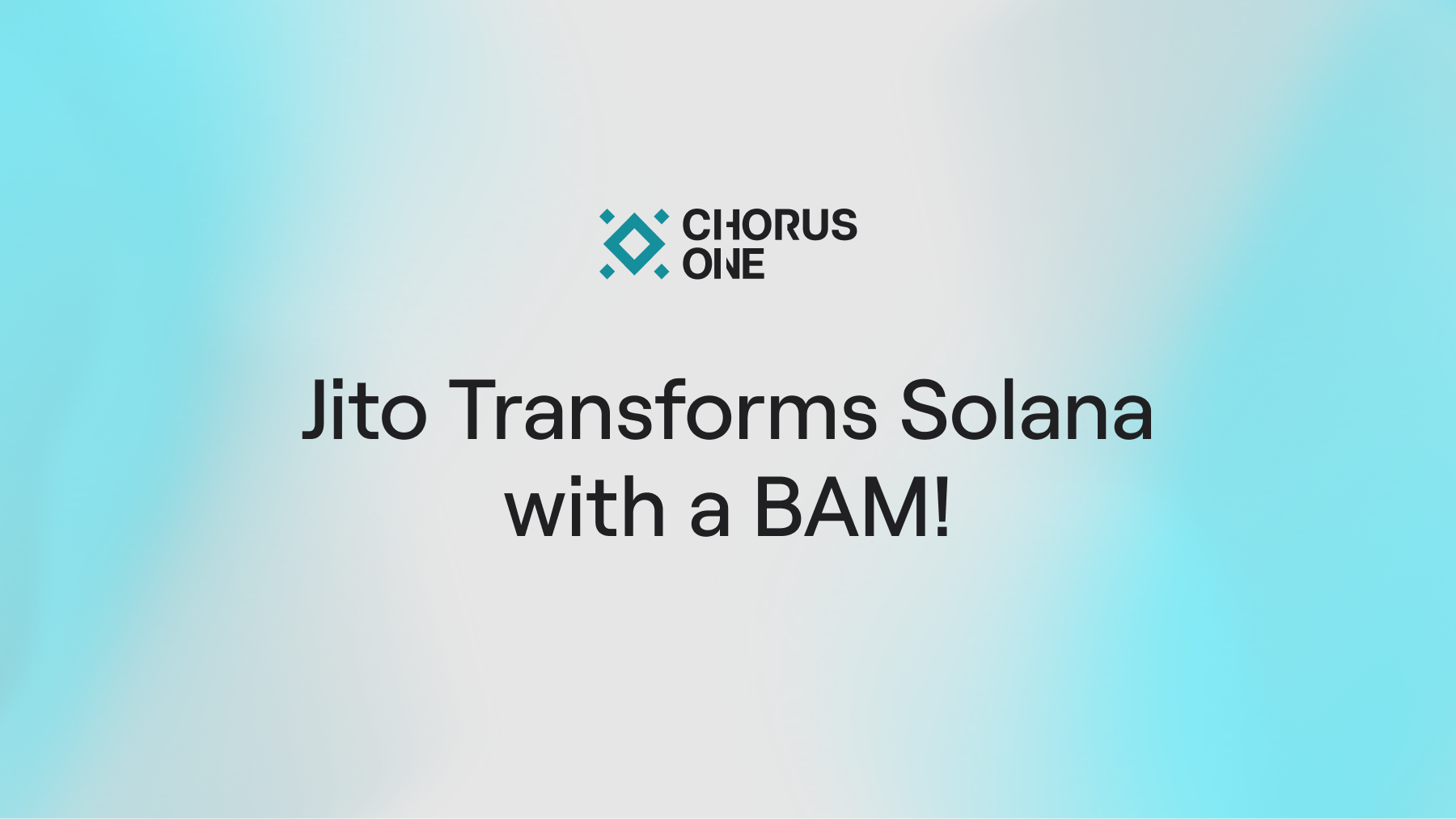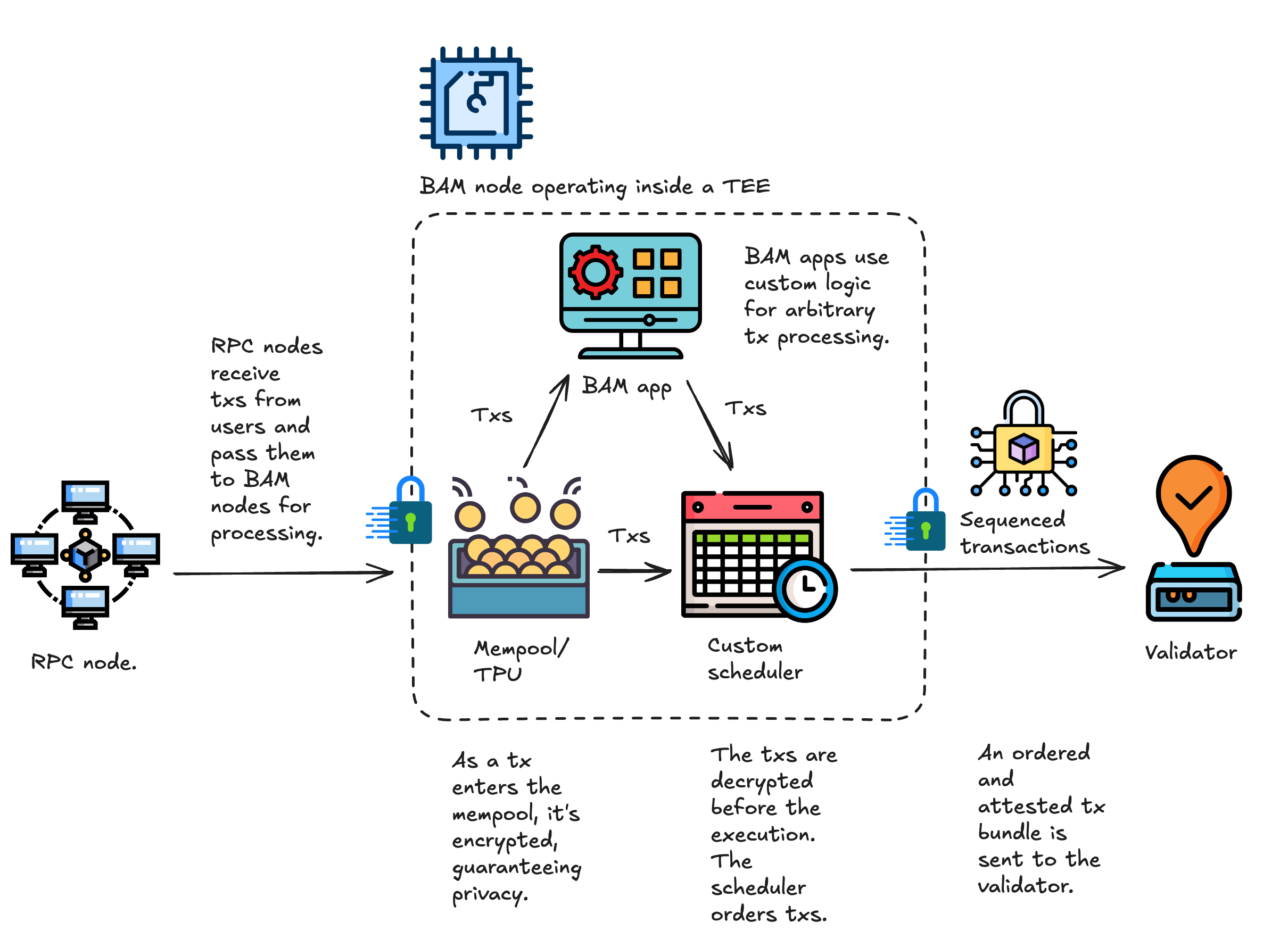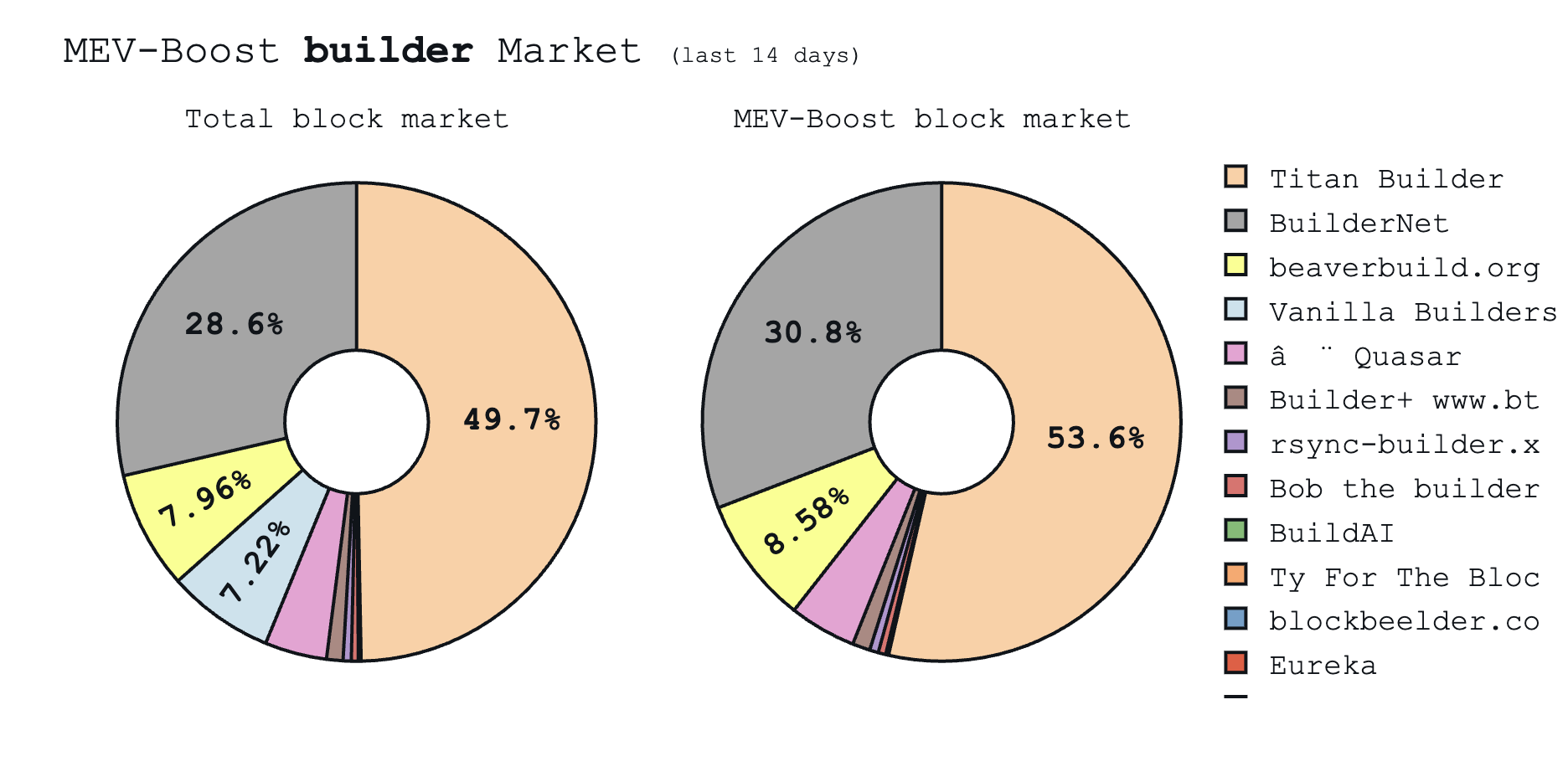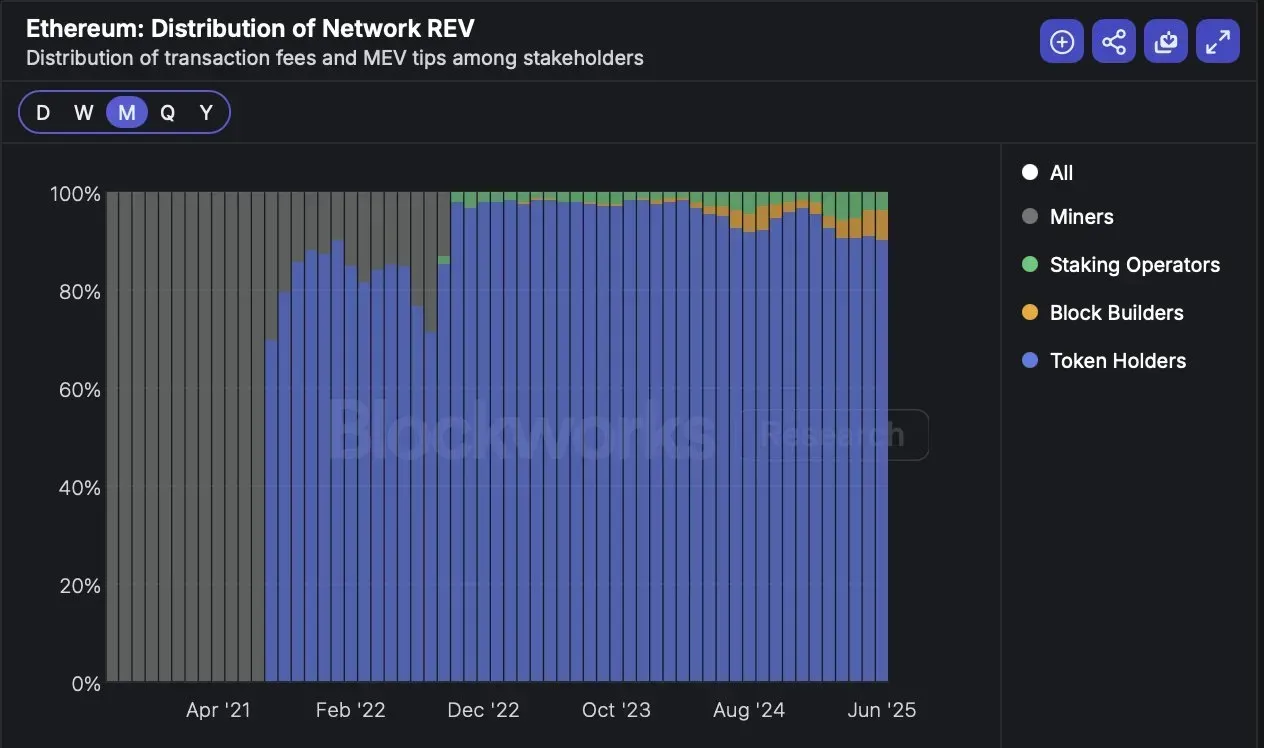

At Solana Accelerate in May, Anza introduced Alpenglow, a new consensus mechanism capable of finalizing blocks in as little as 150ms. Overhauling consensus is a colossal task for any blockchain, but it’s just one of the major changes coming to Solana in the months ahead.
This week, Jito, a core piece in Solana’s infrastructure, announced the Block Assembly Marketplace (BAM). Together, Alpenglow and BAM completely rethink how Solana works. The new architecture will enable use cases previously out of reach, introduce new economic dynamics, reduce toxic MEV, and lay the groundwork for broader institutional adoption.
In this article, we’ll explore what’s changing, what it means for the network, validators, and users, and the challenges ahead.
At the heart of Solana’s upcoming infrastructure overhaul is the Block Assembly Marketplace (BAM). It introduces several changes:
Here’s what the new transaction flow looks like:

A lot is happening here, so let’s break it down step by step.
Solana's new architecture is inspired by Flashbots' BuilderNet, where Trusted Execution Environments (TEEs) play a central role. TEEs are isolated areas within processors (like Intel SGX or Intel TDX) that protect data and code execution from all external access.
In Solana’s upcoming design, TEEs enable:
The use of TEEs also comes with trade-offs. Their security has been questioned, and there’s even a dedicated site, sgx.fail, that tracks known vulnerabilities in Intel’s SGX platform. Common attack vectors include side-channel attacks (e.g., Spectre) or hardware-level vulnerabilities (e.g., Plundervolt). However, if such an attack is launched against Solana, the most severe likely consequence might be transaction reordering, including sandwiches, an arguably acceptable cost for revealing a vulnerability.
In the current Jito architecture, RPC nodes and validators send transactions to a relayer, the current leader (i.e., the validator building the block), and a few upcoming leaders. The relayer filters these transactions and passes them to the block engine. Meanwhile, MEV searchers create transaction bundles and also submit them to the block engine. The block engine then processes and forwards these transactions and bundles to the validators for inclusion in the block.
The new architecture changes this. BAM nodes take over the roles of both the block engine and the relayer. These specialized nodes receive transactions from RPCs, sequence them, and forward to validators. This effectively introduces Proposer-Builder Separation (PBS) to Solana.
Another feature of BAM nodes is support for customizable schedulers, which allow developers to influence the block-building process through Plugin apps.
Initially, Jito will operate all BAM nodes. Over time, the plan is to expand to a permissioned set of operators, with the long-term goal of supporting a permissionless model.
One of the most exciting innovations in the new Jito architecture is the introduction of Plugins, or interfaces that interact with BAM nodes. These plugins can access live transaction streams and use custom logic to influence ordering or insert their own transactions. While the scheduler still determines final ordering, plugins can use priority fees to shape block composition.
This opens up new possibilities for both developers and users. It also aligns with Solana’s IBRL philosophy, enabling new use cases that push the limits of what Solana currently supports.
From an economic standpoint, plugins introduce a revenue-sharing model that can benefit validators, delegators, and developers. That said, open questions remain about how different plugins will interact with each other, and how their economics will evolve.
Because plugins run within TEEs, they have full access to incoming transactions. This means the Plugins’ permissionlessness must be significantly constrained; otherwise, it would risk enabling harmful MEV extraction.
A practical example of plugin potential is how they might improve Central Limit Order Book (CLOB) exchanges on Solana.
CLOB exchanges let users place limit orders, specifying price, size, and direction. But building efficient, on-chain CLOBs on Solana is notoriously difficult due to:
Bulk Trade offers a new approach: directly integrating the order book into the validator stack. Orders are received through a dedicated port, matched deterministically in 25ms cycles across validators, and aggregated into a net-delta commitment that’s later posted onchain.
The downside? Validators must run additional software, which is a tough sell.
However, with BAM, this ultra-fast order-matching functionality could be implemented as Pugin. That makes adoption far easier without requiring validators to manage separate systems.
Plugins effectively extend Solana’s native capabilities. In this way, their role is comparable to that of L2s on Ethereum. However, because Plugins are built at the heart of Solana’s transaction pipeline, they contribute economic value to the network, rather than extracting it like traditional L2s often do.
That said, the approach isn’t without challenges, particularly for Plugins that must maintain shared state. Bulk Trade is a good example: its orders, cancellations, and fills need to be managed deterministically and synchronized across multiple nodes. The challenge is essentially a distributed consensus problem, but for high-frequency trading with sub-second finality. In such cases, the advancements in Alpenglow’s shred distribution system, Rotor, would hopefully provide meaningful support.
Ultimately, plugins bring three major benefits to Solana:
In the current Solana architecture, validators handle both transaction sequencing and execution. The new model separates these responsibilities: transaction sequencing is delegated to BAM nodes, while validators are responsible for executing and validating the proposed blocks.
Here’s how it works:
To support this model, BAM validators will run an updated version of the Jito-Solana client, which will be adapted to receive transactions from BAM nodes. In the future, BAM will integrate as a modular scheduler within Agave and Firedancer, allowing validators to leverage the optimized scheduling of BAM and the improved performance of these clients.
The changes introduced by the new architecture fall into three categories:
It’s too early to say which will have the most significant impact, but each will substantially contribute to changing Solana’s economics and dynamics. Let’s start with PBS.
So far, Ethereum is the only blockchain that has implemented PBS. Traditionally, validators build (select and order transactions) and propose (submit the block to the network). PBS splits these roles, introducing specialized builders alongside proposers.
The motivation is straightforward: specialized builders can construct more valuable blocks and extract MEV more efficiently. PBS helps address the fact that most validators lack the resources or sophistication to maximize block value on their own.
PBS is implemented on Ethereum offchain via a sidecar software called MEV-Boost. Here’s how it works:
This model improves block quality but comes with trade-offs, especially around centralization.
Currently, two builders, Titan and Beaverbuild, create over 65% of blocks on Ethereum (down from over 80%). This makes block building the centralization hotspot in Ethereum’s transaction pipeline.
Much of this concentration comes from private transaction orderflow. Builders enter exclusive deals with wallets and exchanges to receive transactions before they hit the public mempool, which creates strong feedback loops that reinforce their dominance.
In late 2024, Flashbots introduced BuilderNet to tackle these centralization risks. BuilderNet, the main inspiration for the BAM architecture, allows multiple parties to operate a shared builder, offering equal access to orderflow at the network level. MEV proceeds are then distributed to orderflow providers based on open-source refund logic.
Participation is permissionless for both builders and orderflow providers. The broader goal is to prevent any single party from dominating block building.
Today, BuilderNet is jointly operated by Flashbots, Beaverbuild, and Nethermind and plans to expand. Within eight months, BuilderNet captured 30% of the market. Beaverbuild has largely transitioned its infrastructure over, and plans a full migration.

While promising, BuilderNet's long-term effectiveness remains uncertain. As long as individual builders can offer better orderflow deals to wallets, market makers, searchers or exchanges, centralization incentives will not disappear.
PBS in Solana will introduce several economic shifts, but also some trade-offs, especially for validators:
Decreased MEV share for validators and delegators: With a new player in the block-building pipeline, rewards must be split. As seen on Ethereum, this can reduce delegator rewards and validator income.

Elimination of client-level optimizations
While these are important points, the upside for the broader ecosystem is real: PBS improves network efficiency and user experience by enabling more competitive, higher-value block construction.
PBS seems inevitable as networks reach sufficient activity and ecosystem maturity. The incentives to fix block building inefficiency become strong enough that a market participant will always rise to fix it. PBS reflects this evolution: a step toward optimized infrastructure that benefits the network and its users. We should all be happy that Solan has reached this point.
Beyond economics, one of BAM's key goals is reducing toxic MEV. Solana’s new design includes two security mechanisms to help achieve this:
These safeguards raise the bar for MEV attacks significantly. That said, risks remain:
While MEV will always be a game of cat and mouse, BAM makes harmful extraction meaningfully harder. While this benefits all users, it is especially important for attracting institutions that demand deterministic execution, privacy, and auditability. By enabling these features, BAM can drive higher activity and volume on Solana, ultimately increasing total network REV.
Solana will likely face some of the same hurdles Ethereum encountered in its PBS transition:
Solana is entering a new phase, defined not just by faster Alpenglow consensus, but by a fundamental rethinking of how blocks are built, ordered, and validated.
With the introduction of BAM, Solana is embracing Proposer-Builder Separation, TEE-based privacy protections, and programmable transaction pipelines through Plugins. These structural upgrades shift how value is created and flows through the network.
Yes, there are trade-offs. Validators may lose some of the flexibility and MEV opportunities they enjoy today. Client-level optimizations will become less relevant. Decentralization risks around block building will also be an issue. But these changes come with big upsides:
The transition won’t be easy. TEEs must be widely adopted, and builders and validators must adjust to new roles.
At Chorus One, we support upgrades that make Solana more efficient, resilient, and user-friendly. BAM brings these benefits. We’re excited to help build and support the next phase of Solana’s growth!